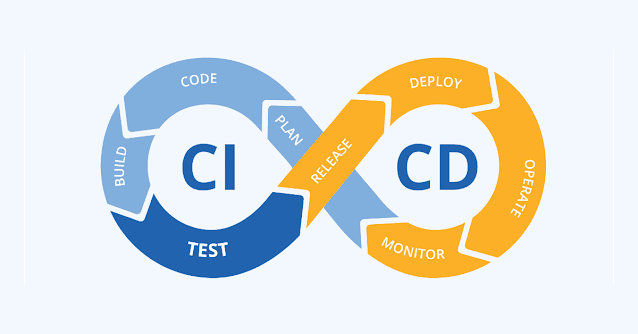What is CI/CD
CI/CD or "Continuous Integration, Continuous Deployment", or "Continuous Delivery". It is a set of practices and tools that enable software development teams to automate the building, testing, and deployment of their software applications.
In software engineering, CI/CD is the set of work methods, tools and automations that form the technical backbone of agile software development. CI/CD tools enable continuous software development, which reduces as much as possible the time that passes between adding a feature or creating a change in the software code, and submitting a new and stable version of the software to the client
Continuous Integration (CI) involves developers regularly integrating their code changes into a shared repository, where automated builds and tests are run to detect and fix any issues early on in the development process.
Continuous Deployment (CD) focuses on automating the delivery process to ensure that the software can be reliably and repeatedly deployed to any environment, such as staging or production, with minimal manual intervention. It takes the automation a step further by automatically deploying the software changes to production environments after passing the necessary tests and approvals.
Continuous Delivery (CD) is a software development practice that aims to automate the process of delivering software changes to production environments. CD extends Continuous Integration (CI) by automating the deployment process after the code changes have passed the necessary tests and have been reviewed.
CD ensures that software changes are delivered in a consistent and reliable manner, allowing teams to deploy changes to production quickly and frequently. With CD, teams can deploy smaller, incremental changes more frequently, which can lead to faster feedback and shorter development cycles.
The key to successful CD is automation, which eliminates human error and ensures that software changes are delivered consistently. CD involves automating the entire deployment pipeline, from building the software to testing, packaging, and deploying it to production.
CD also involves collaboration and communication between development, operations, and other stakeholders. It requires a cultural shift towards a DevOps mindset, where teams work together to automate the entire software development lifecycle, from planning to production.
Together, these practices ensure that software changes are tested, reviewed, and deployed in a consistent and timely manner, reducing errors and accelerating the development cycle.
It is essential component of a modern software development process, as it enables teams to deliver high-quality software changes quickly and reliably while reducing the risk of errors and downtime in production environments.
Together, these practices ensure that software changes are tested, reviewed, and deployed in a consistent and timely manner, reducing errors and accelerating the development cycle.
 |
| Secprof Blog: CI/CD |
What kind of integration sys can help in a CICD process and what kind of solutions they provide?
There are several integration systems that can help in a CICD process, and each provides different solutions to facilitate the automation of software development, testing, and deployment processes. Here are some examples:
- Version Control Systems (VCS): VCSs such as Git or SVN help to manage source code and enable developers to collaborate effectively. They are an essential component of a CICD process, as they facilitate Continuous Integration by providing a centralized repository for code changes.
- Build Automation Tools: Tools such as Jenkins, Travis CI, or CircleCI, automate the build process and enable developers to compile and package their code changes automatically. These tools also provide Continuous Integration by running automated tests and reporting the results to the development team.
- Testing Frameworks: Testing frameworks such as Selenium, JUnit, or NUnit enable developers to automate the testing of their code changes. These frameworks provide Continuous Integration by allowing developers to detect and fix issues early in the development process.
- Configuration Management Tools: Configuration management tools such as Ansible or Puppet help to automate the deployment of software changes to various environments. They provide Continuous Delivery by enabling developers to deploy changes consistently across all environments.
- Containerization Tools: Containerization tools such as Docker or Kubernetes provide a standardized environment for running applications and enable developers to package their applications into portable containers. These tools provide Continuous Deployment by automating the deployment of applications to production environments.
Integration systems help to automate various aspects of the software development process, making it easier and more efficient for developers to deliver high-quality software quickly and reliably.
Here is a short video explaining of CI/CD
